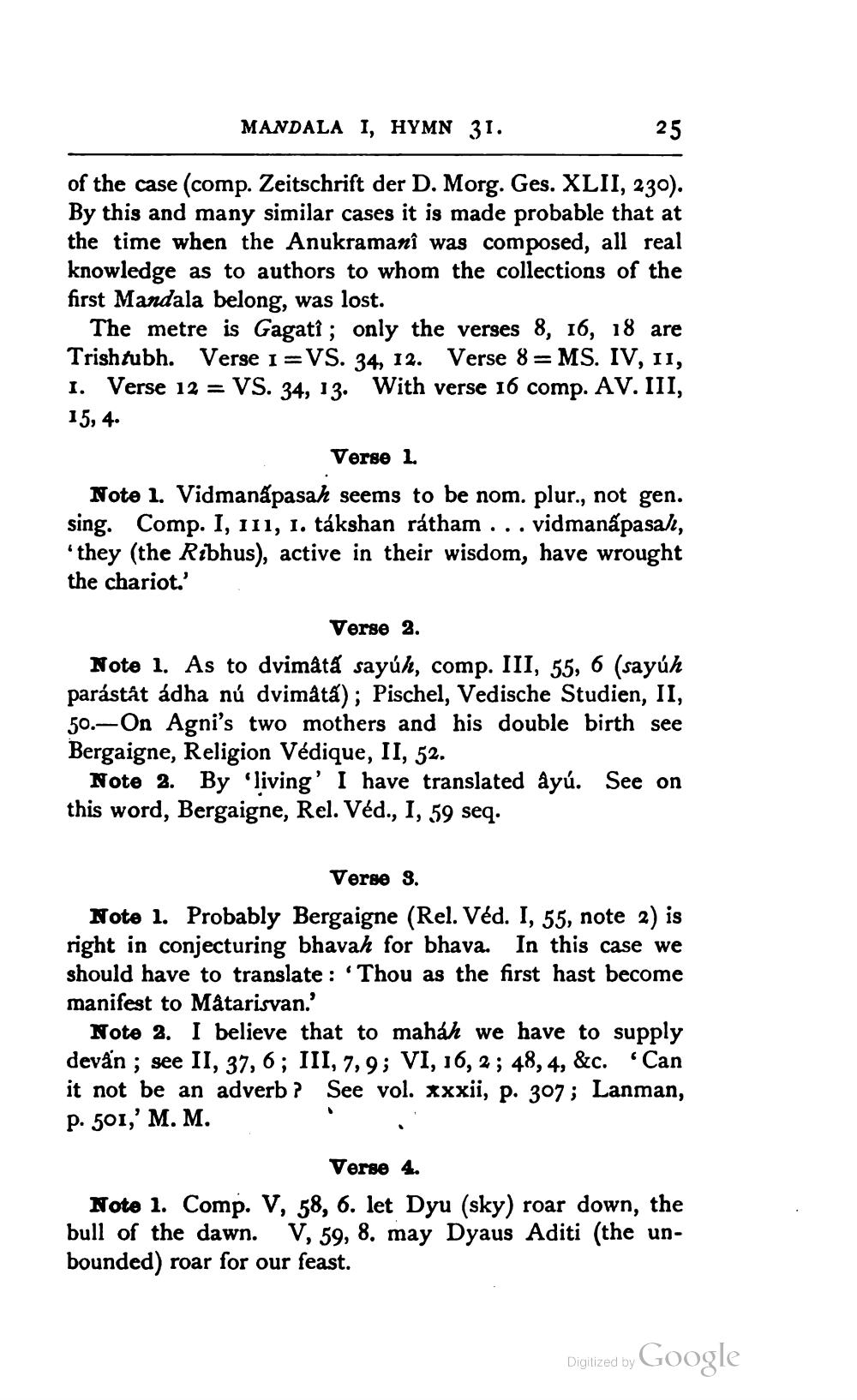________________
MANDALA I, HYMN 31.
25
of the case (comp. Zeitschrift der D. Morg. Ges. XLII, 230). By this and many similar cases it is made probable that at the time when the Anukramanî was composed, all real knowledge as to authors to whom the collections of the first Mandala belong, was lost.
The metre is Gagati; only the verses 8, 16, 18 are Trishtubh. Verse 1 =VS. 34, 12. Verse 8 = MS. IV, 11, 1. Verse 12 = VS. 34, 13. With verse 16 comp. AV. III, 15, 4.
Verse 1 Note 1. Vidmanápasah seems to be nom. plur., not gen. sing. Comp. I, 111, 1. tákshan rátham ... vidmanấpasali, they (the Ribhus), active in their wisdom, have wrought the chariot.'
Verse 2.
Note 1. As to dvimata sayúk, comp. III, 55, 6 (sayúh parástât ádha nú dvimata); Pischel, Vedische Studien, II, 50.-On Agni's two mothers and his double birth see Bergaigne, Religion Védique, II, 52.
Note 2. By living' I have translated dyú. See on this word, Bergaigne, Rel. Véd., I, 59 seq.
Verse 3. Note 1. Probably Bergaigne (Rel. Véd. I, 55, note 2) is right in conjecturing bhavah for bhava. In this case we should have to translate : 'Thou as the first hast become manifest to Måtarisvan.'
Note 2. I believe that to mahah we have to supply devån ; see II, 37, 6; III, 7,9; VI, 16, 2; 48, 4, &c. Can it not be an adverb? See vol. xxxii, p. 307; Lanman, P. 501,' M. M.
Verse 4. Note 1. Comp. V, 58, 6. let Dyu (sky) roar down, the bull of the dawn. V, 59, 8. may Dyaus Aditi (the unbounded) roar for our feast.
Digitized by Google




